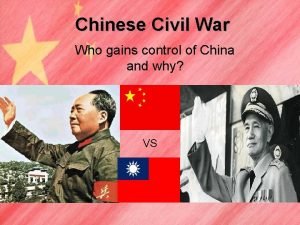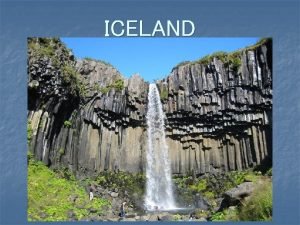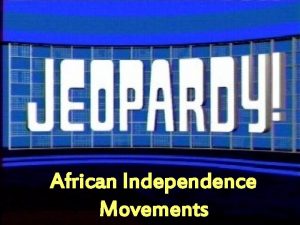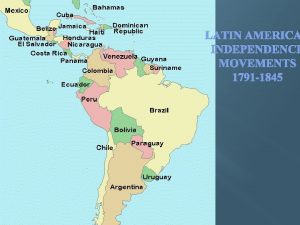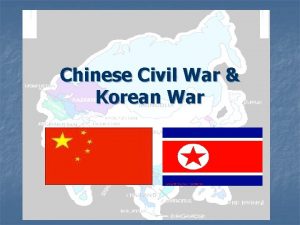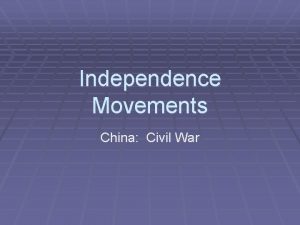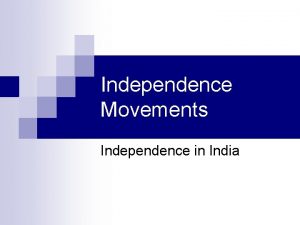Independence Movements China Civil War Chinese Civil War









- Slides: 9

Independence Movements China: Civil War

Chinese Civil War (1927 -1949) § 1912 – Nationalists overthrew the Qing dynasty which had ruled China since 1644 § 1912 – Sun Yixian became the President of China (goals – end to foreign control, democracy, and economic security for all Chinese) – ineffective leader § 1913 – Yuan Shikai (a powerful general) became President of China – ruled as a military dictator (sparked revolts throughout China – period of instability)

Chinese Civil War (1927 -1949) § May 4, 1919 (May Fourth Movement) – After hearing about the Versailles Treaty, many students, workers, manufacturers, shopkeepers, and professionals protested Western influence/democracy in China and opted for Lenin’s brand of Soviet communism § While the Communist Party was forming, Sun Yixian and his Nationalist Party set up a government in South China

Chinese Civil War (1927 -1949) § April 1927 – Chiang Kai-shek and the Nationalists attacked the Communists in Shanghai § 1928 – Chiang Kai-shek became President of the Nationalist Republic of China § 1927 -1949 – Civil War between Nationalists and Communists


Nationalists § Leader - Chiang Kai-shek § Area Ruled - Southern China § Foreign Support - United States § Public Support - Weak due to inflation and failing economy § Military Organization - Ineffective, corrupt leadership and poor morale

Communists § Leader - Mao Zedong § Area Ruled - Northern China § Foreign Support - Soviet Union § Public Support - Strong due to promised land reform § Military Organization - Experienced, motivated guerilla army

Two Chinas Emerge § China had split into two nations – Island of Taiwan (Nationalist China) and the People’s Republic of China (mainland China) § Chiang Kai-shek – ruler of Nationalist China § Mao Zedong – ruler of People’s Republic of China

Two Chinas Emerge § Xeng Diapong Ø Took over after Mao’s Death Ø Reformed China’s economy to a market economy Ø Continued communist control of government
 Civil war resumes
Civil war resumes Who
Who African independence movements
African independence movements Examples of axial movement
Examples of axial movement Chapter 16 lesson 2 challenges to slavery
Chapter 16 lesson 2 challenges to slavery Civil war first modern war
Civil war first modern war Anglo chinese school primary
Anglo chinese school primary Fault line iceland
Fault line iceland Paraguay: packing -news -china -chinese -alibaba -amazon
Paraguay: packing -news -china -chinese -alibaba -amazon How did the ming dynasty restore chinese rule to china?
How did the ming dynasty restore chinese rule to china?

